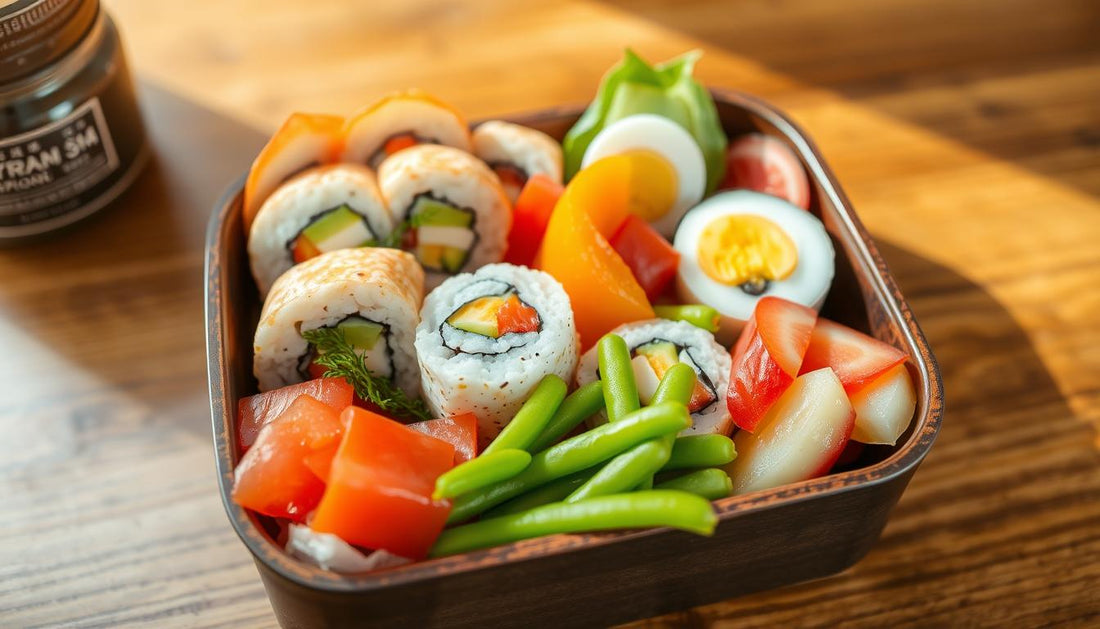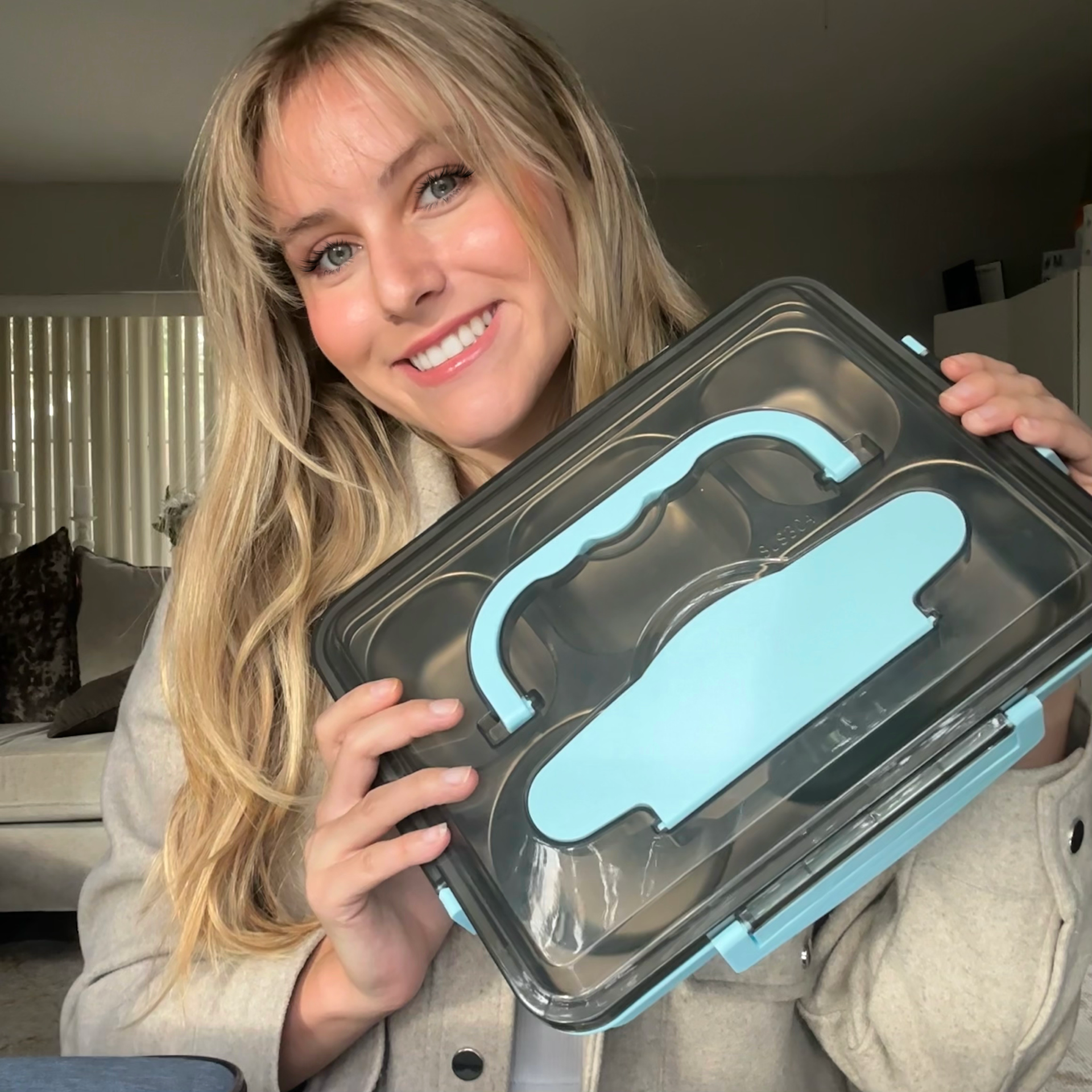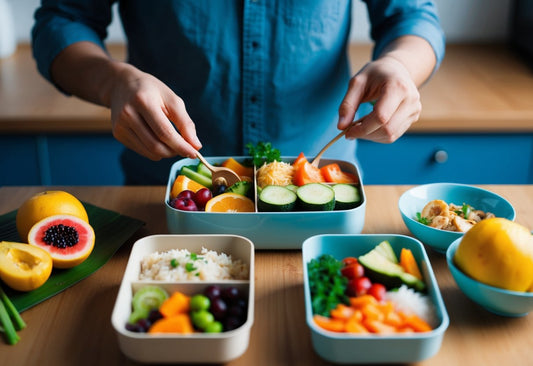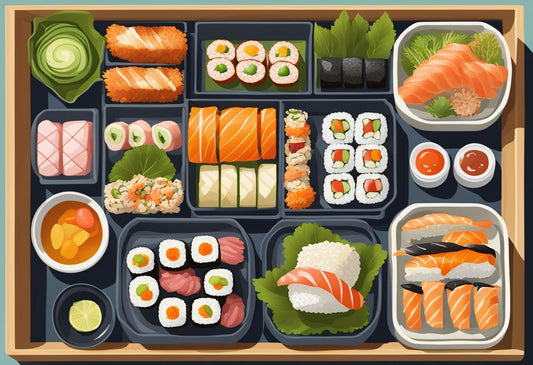
The Best Bento Boxes of 2024: How to Choose the Perfect Bento Box
Ever wondered how a simple lunch container could change your meal prep? Enter the bento box, a versatile meal companion that's taking the culinary world by storm. These compartmentalized wonders have grown from their Japanese roots to become a global sensation. They offer a perfect blend of functionality and style for food lovers everywhere.
In 2024, the best bento boxes are more than just lunch boxes; they're a lifestyle choice. They come with leak-proof seals and materials that can go in the microwave. Whether you're packing a gourmet lunch for work or a fun meal for your kids, there's a bento box out there waiting to make your dining experience extraordinary.
Choosing the perfect bento box might seem daunting with so many options available. But fear not! We've done the heavy lifting, testing various models to bring you the cream of the crop. Our rigorous evaluation included packed lunch tests, leak checks, and even durability challenges to ensure you get the best bang for your buck.
Key Takeaways
- Bento boxes offer versatile meal storage with multiple compartments
- Materials range from plastic to stainless steel, each with unique benefits
- Size and compartment configuration are crucial for meal variety
- Leak-proof features ensure mess-free transportation
- Durability and ease of cleaning are important factors to consider
- Some bento boxes are microwave and dishwasher safe for added convenience
- The right bento box can enhance portion control and meal presentation
Understanding Bento Boxes: History and Modern Use
Bento boxes are a big part of Japanese culture, with a history that goes back centuries. They started as simple packed meals but have grown into beautiful food arrangements. These show the true spirit of Japanese cuisine.
Origins of Bento in Japanese Culture
The story of bento began in the Kamakura Period (1185-1333) with the term "hoshi-ii" or "dried meal". By the Edo period (1603-1867), bento boxes were a common meal. They varied by social class and job. The traditional bento followed "ichi-juu-san-sai" (one soup, three sides), showing a balanced meal approach.
Evolution of Bento Boxes for Global Markets
In the 20th century, bento boxes changed a lot. Materials like aluminum and plastic became popular, leading to bentos from convenience stores and train stations. Now, you can find bento boxes in many materials, including plastic, glass, wood, and bamboo.
Benefits of Using Bento Boxes for Meals
Bento boxes have many benefits for today's meals. They help control portions, cut down on food waste, and offer a variety of balanced meals. The design keeps different flavors separate, keeping each dish fresh. Bento lunches are also a great way to save money, loved by people in Japan and worldwide.
|
Era Key Development Impact on Bento Culture Kamakura Period (1185-1333) |
Introduction of "hoshi-ii" (dried meal) |
Laid foundation for portable meals |
|
Edo Period (1603-1867) |
Bento becomes everyday meal |
Diversification based on social classes |
|
20th Century |
Introduction of modern materials |
Rise of convenience store bentos |
|
Present Day |
Global popularity |
Adaptation to international tastes |
Key Features to Consider When Selecting a Bento Box
Choosing the right bento box can make your meals better. Let's look at the key things to think about when picking one.
Material Options: Plastic, Stainless Steel, and Wood
Bento boxes are made from different materials, each with its own perks. Plastic ones are light and easy on the wallet. Make sure they're BPA-free for safety. Stainless steel ones last a long time and don't hold onto smells or stains. Wooden ones give a natural look but need more care.
Size and Compartment Configuration
Think about how much you eat and what you like to eat when picking a size. Small boxes (400mL) are great for kids or if you eat less. Big ones (900mL) are better for adults and teens. Having many compartments helps keep food separate and balanced.
|
Size Capacity Suitable for Small |
400mL |
Young kids, light eaters |
|
Medium |
600mL |
Older kids, adults with small appetites |
|
Large |
900mL |
Adults, teenagers |
Leak-proof and Insulation Capabilities
A bento box that won't leak is key for keeping food fresh. Look for ones with tight seals and dividers. Insulation is also important for keeping food at the right temperature, especially for hot meals.
Microwave and Dishwasher Safety
It's handy to have a bento box that's safe for the microwave and dishwasher. Plastic and glass ones usually are. Stainless steel and wooden ones aren't for the microwave but are durable and look good.
Your personal taste plays a big part in choosing the right bento box. Think about your lifestyle, eating habits, and what you like to see. This will help you find the perfect one for you.
How Do I Choose a Bento Box
Choosing the right bento box can be fun and exciting. Whether you're looking for a bento box for kids or adults, there are several factors to consider.
Size is key when picking the best bento box. For teens and adults, a 700-900mL capacity is perfect. Smaller appetites do well with 700mL, while bigger appetites like 900mL better. Remember, 1mL is about 1 calorie in bento-style packing.
For kids, choose a single-tier bento box. These are easy to clean and pack, great for beginners. Shape is also crucial. Oval and round boxes fit "nokke" or "donburi" style meals well.
Material affects how you use the box. Wooden boxes have a traditional look but aren't safe for the microwave or dishwasher. Stainless steel boxes are light and don't hold odors, perfect for room-temperature foods. Most plastic boxes can go in the microwave and dishwasher, but not the inner lids.
|
Material Pros Cons Wood |
Traditional appeal |
Not microwave/dishwasher safe |
|
Stainless Steel |
Lightweight, odor-resistant |
Not suitable for hot foods |
|
Plastic |
Often microwave/dishwasher safe |
May not be as durable |
Think about what you like to eat. If you prefer hot lunches, get a thermal bento box. For wet foods like curry, make sure your box won't leak. By thinking about these things, you'll find the perfect bento box for you.
Top Bento Box Recommendations for Different Needs
Choosing the best bento box depends on your specific needs. We've curated a list of top picks to suit various preferences. From overall performance to kid-friendly options and traditional styles, there's something for everyone.
Best Overall Bento Box: Ceedalles Bento Box
The Ceedalles Bento Box is a standout choice. It has dividers and a spacious design. Perfect for adults and teens with larger appetites, it holds 900mL. This versatile option makes meal planning and portion control easy.

Best for Kids: Pottery Barn All-in-One Bento Box
The Pottery Barn All-in-One Bento Box is great for kids. It has easy-to-open latches and fun colors, making lunchtime fun. With a 640mL capacity, it's perfect for older kids with small to medium appetites.
Best Leakproof Option: Monbento Large Bento Box
The Monbento Large Bento Box is the top choice for leakproofing. It's ideal for packing liquid-heavy meals or keeping foods separate. Suitable for adults and teenagers, it offers plenty of space for a satisfying lunch.
Best Traditional Style: Akazuki Bento Box
For those who love traditional bento boxes, the Akazuki Bento Box is a great pick. It combines Japanese aesthetics with modern functionality. Available in various sizes, it's perfect for authentic Japanese-style meals.
|
Bento Box Best For Capacity Key Feature Ceedalles |
Overall Use |
900mL |
Adjustable dividers |
|
Pottery Barn All-in-One |
Kids |
640mL |
Easy-open latches |
|
Monbento Large |
Leakproof Needs |
900mL |
Excellent seal |
|
Akazuki |
Traditional Style |
Various |
Japanese aesthetics The perfect bento box varies for each person. Think about your priorities like size, material, and specific features when choosing. |
Conclusion
Choosing the perfect bento box in 2024 means looking at several key factors. The top bento boxes mix functionality, style, and convenience. You can find everything from traditional wooden to modern stainless steel containers.
Think about the material when picking a bento box. Stainless steel ones are tough, don't rust, and fight bacteria. They're great for outdoor use, keeping food at the right temperature for a long time. Plastic bento boxes are light and can be used for many things.
The ideal bento box fits your lifestyle. Search for leak-proof lids, dishwasher safety, and microwave use. Most have three compartments for different foods. Whether you want something for your kids or a stylish one for yourself, the best bento boxes of 2024 have you covered. They make meal prep and eating healthy simple.
FAQs
Q: What is a bento box and why should I use one for lunch?
A: A bento box is a reusable container originating from Japan, designed to hold a single-portion meal. Using a bento box for lunch offers several benefits: it promotes portion control, allows for a variety of foods, reduces waste from disposable packaging, and can be an aesthetically pleasing way to enjoy your meal. Whether you're a busy professional or packing lunch for kids, bento boxes are versatile and practical.
Q: What are the different types of bento boxes available?
A: There are several types of bento boxes to choose from: 1. Traditional Japanese wooden bento boxes 2. Plastic bento boxes (often BPA-free) 3. Stainless steel lunch boxes 4. Glass bento boxes 5. Insulated bento boxes 6. Two-tier or multi-compartment bento boxes 7. Kids' bento boxes with easy-to-open lids Each type has its own advantages, so consider your specific needs when selecting.
Q: What features should I look for in the best bento box?
A: The best bento box should have several key features: 1. Leak-proof design 2. Multiple compartments for different foods 3. Microwave and dishwasher safe (if made of appropriate materials) 4. Durable and long-lasting 5. Appropriate size for your needs 6. Easy to clean 7. Includes necessary utensils 8. Aesthetically pleasing design Consider these factors to find the perfect bento box for your lifestyle.
Q: Are plastic bento boxes safe to use?
A: Many modern plastic bento boxes are made from BPA-free plastic, which is considered safe for food storage. When choosing a plastic bento box, look for ones explicitly labeled as BPA-free. Additionally, opt for high-quality, food-grade plastics that are microwave and dishwasher safe. Always follow the manufacturer's guidelines for use and care to ensure the longevity and safety of your bento box.
Q: How do I choose the right size bento box?
A: The right size bento box depends on your appetite and the type of foods you plan to pack. A general rule of thumb is: - Small bento: 600-800 ml capacity (for light eaters or kids) - Medium bento: 800-1000 ml capacity (for average adults) - Large bento: 1000-1500 ml capacity (for bigger appetites or longer days) Consider your typical lunch portion sizes and whether you want to include snacks or multiple meals when selecting the size.
Q: What's the best bento box for kids?
A: The best bento box for kids should be: 1. Durable and able to withstand drops 2. Easy to open and close 3. Leak-proof to prevent messes 4. Made from safe, BPA-free materials 5. Appropriately sized for kids' portions 6. Dishwasher safe for easy cleaning 7. Featuring fun designs or colors Popular options include the Bentgo Kids bento box or the Umami All-in-1 Bento, which are designed specifically with children in mind.
Q: How do I properly clean and maintain my bento box?
A: To clean and maintain your bento box: 1. Rinse immediately after use to prevent staining 2. Use mild soap and warm water for daily cleaning 3. For dishwasher-safe bento boxes, place on the top rack 4. Air dry completely before storing 5. Avoid using abrasive cleaners or scrubbers 6. For wooden bento boxes, hand wash only and oil occasionally 7. Store in a cool, dry place with the lid off to prevent odors Regular cleaning and proper care will extend the life of your bento box.
Q: Can I use my bento box for hot foods?
A: This depends on the material of your bento box. Many plastic and stainless steel bento boxes are suitable for hot foods and can be microwaved. However, always check the manufacturer's instructions. Some bento boxes come with insulated containers specifically for hot foods. For wooden bento boxes, it's best to avoid hot foods as they can damage the wood or affect its longevity.
Q: What's the history of bento boxes?
A: Bento boxes have a rich history dating back to the 5th century in Japan. Originally, they were simple boxes used to carry rice for workers. Over time, they evolved into more elaborate containers for carrying a variety of foods. The term "bento" became widely used during the Azuchi-Momoyama period (1568-1600). Today, bento boxes are popular worldwide, combining traditional Japanese aesthetics with modern convenience.
Q: How do I pack a balanced meal in a bento box?
A: To pack a balanced meal in your bento box: 1. Follow the 3-1-2 rule: 3 parts carbohydrates, 1 part protein, and 2 parts vegetables 2. Include a variety of colors for visual appeal and nutritional balance 3. Use different textures to make the meal more interesting 4. Add small portions of fruits or healthy desserts 5. Consider including umami-rich foods for satisfying flavor 6. Use dividers or silicone cups to separate different foods 7. Pack foods tightly to prevent shifting during transport This approach ensures a well-rounded, appealing meal that fits perfectly in your bento box.



